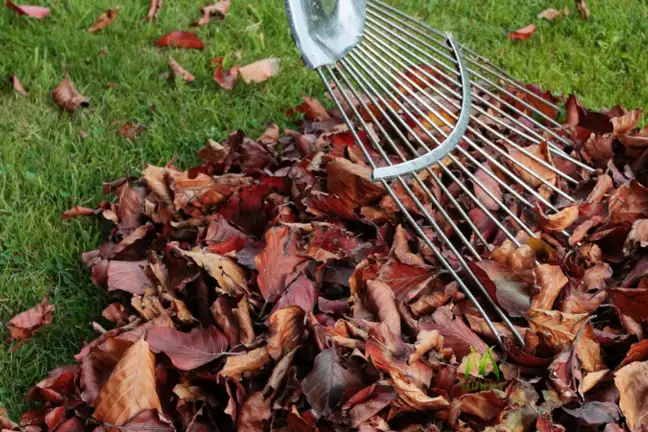What Kind of Ice Melt Is Safe for My Lawn?
Last Updated on October 28, 2025 by Duncan
If you’ve put a lot of money and effort into your lawn or garden, you don’t want to ruin it, do you? Using the improper ice melt is a definite way to cause damage, if not kill, your grass.
Ice melts can be highly harmful to your lawn and garden. So, you must be wondering which ice melt is safe for my lawn, right?
More importantly, how do you use Ice melt safely without harming your grass?
In this post, we’ll look at how Ice melts work and which ones are safer for your grass.
Why is Ice melt harmful to grass?
Some ice melts, particularly chloride-based salts, can be detrimental to your plants and lush, green lawn.
The most prevalent ice melt is rock salt (sodium chloride), which melts Ice to roughly 15 degrees Fahrenheit. While this is the case, it is actually quite detrimental to plants and your grass.
Additionally, it can harm concrete and flagstones, so avoid using this type of ice melt whenever feasible.
As a salt, it can cause grass to dry. This occurs during the plant’s normal process of absorbing nutrients from the soil.
You see, when grass absorbs salt, it spreads throughout the plant. As this occurs, it will begin to extract moisture from the plant. Eventually, this can result in a damaged or dead plant.
This is especially problematic in the colder months, when evergreen plants are already at a higher risk of ‘wilting’, a natural process that causes plants to dehydrate in the winter.
What type of ice melt is safe for my lawn?
If you are asking this question, you should know that there are a few good ice-melt methods that are less harmful to your grass. While this is the case, keep in mind that appropriate use is perhaps the most significant factor.
Overall, you should avoid using salt-based ice melts; while they may be less expensive, they are more likely to cause damage to your lawn or concrete.
A few good ice melt options are:
Calcium chloride
Calcium chloride is commonly used in regions where extreme cold temperatures are typical.
Calcium chloride can melt Ice at temperatures as low as -25°F (-32°C), making it a viable option for colder climes.
Calcium chloride, like sodium chloride, breaks down Ice quickly, making it useful in emergencies or for speedy deicing.
While calcium chloride can still cause surface damage, it is generally less corrosive than rock salt, making it a better choice for concrete and other materials that may be affected by sodium chloride.
While calcium chloride is excellent, it has its fair share of negatives. For one, it is more expensive than sodium chloride, making it less cost-effective for larger applications.
Although less corrosive than rock salt, calcium chloride can still damage concrete surfaces, leading to cracking and spalling when applied in large quantities over time.
Calcium chloride, like sodium chloride, can harm plants and streams if it leaches into the environment, so be cautious when handling it.
Potassium chloride
Potassium chloride is frequently used as a more environmentally friendly alternative to conventional Ice melts. It is a salt-based product that contains potassium instead of sodium.
Potassium chloride is widely regarded as less harmful to plant life and soil than sodium chloride. It’s also less damaging to pets.
This ice melt is less likely to cause long-term damage to concrete and other surfaces than sodium or calcium chloride.
Potassium chloride is less expensive than calcium chloride and magnesium chloride, making it a more cost-effective option for small-scale applications.
While it’s excellent, potassium chloride is only effective at temperatures below 20°F (-6°C), making it unsuitable for cold winter conditions.
It also does not work as quickly as other forms of Ice melts, such as calcium chloride and magnesium chloride.
Although potassium chloride is less harmful than sodium chloride, it still contributes to environmental salt levels, which can impair plant growth.
Magnesium chloride
Magnesium chloride has qualities comparable to those of calcium chloride but is often regarded as a more environmentally friendly alternative.
Magnesium chloride is effective down to -13°F (-25°C), making it ideal for moderately cold conditions.
The salt is safer for plants, pets, and aquatic life than sodium and calcium chloride. It is more biodegradable and degrades faster.
It is also less corrosive than sodium chloride and calcium chloride, making it suitable for usage around cars and infrastructure.
While the salt is great, it’s often more expensive than sodium chloride, making it unsuitable for large-scale deicing applications.
While magnesium chloride outperforms sodium chloride at moderately cold temperatures, it may not be as effective as calcium chloride in icy conditions.
It can also leave stains on certain surfaces, such as concrete, that are difficult to remove.
Best practices when using ice melt
Here’s everything you need to know about protecting your lawn and gardens against ice melt damage. It is not only critical to choose the right one, but also to implement it correctly.
Here are some suggestions for using Ice melt correctly.
Remove snow before applying ice melt.
One of the most effective ways to use less ice melt is to clear snow before it sets or freezes. After all, ice melt is intended to dissolve Ice rather than snow.
This will significantly reduce the amount of ice melt needed while keeping your grass healthy and green.
Pre-apply ice melt before snowfall.
Most people are unaware that pre-treating your sidewalk before snow or freezing rain increases its effectiveness.
An excellent ice melt, such as one based on magnesium chloride, will melt the Ice faster than regular rock salt. Furthermore, because less of the chemical is used, the environmental impact around the sprayed regions will be reduced.
FAQs
Why is rock salt harmful to lawns and gardens?
Rock salt, or sodium chloride, is toxic to plants and lawns because it causes dehydration. When grass absorbs salt, it loses moisture, which can cause harm or death. This is especially hazardous in the winter, when evergreen plants are already at greater danger of dehydration.
What are the best ways to apply Ice melt?
To apply Ice melt quickly and safely, you should remove snow first, pre-treat sidewalks before snowfall for greater efficiency, and consider ‘flushing’ your grass in the spring. This strategy has a low environmental impact and minimal impact on your grass.
What is the safest Ice melt for lawns and gardens?
The safest Ice melt for lawns and gardens is calcium chloride-based. Magnesium chloride is also a feasible choice when used correctly. These ice melts are less likely to hurt your plants than standard salt-based solutions.
Parting shot
Now you know the best snow melt options to go with and how to choose the right one. Choosing the best ice melt product depends on several factors, including the severity of your area’s winter weather, your budget, and your environmental concerns.
Traditional salt-based solutions, such as sodium chloride and calcium chloride, are effective but pose environmental and safety concerns.
On the other hand, more environmentally friendly solutions such as magnesium chloride, potassium chloride, and urea-based melts may provide plant and soil safety benefits. Still, they may not function as well in extreme cold.
It goes without saying that understanding the advantages and disadvantages of each ice melt type will help you make the best choice for your specific needs, ensuring safe, effective deicing while avoiding potential environmental repercussions.


